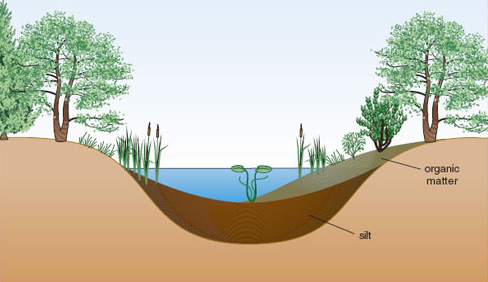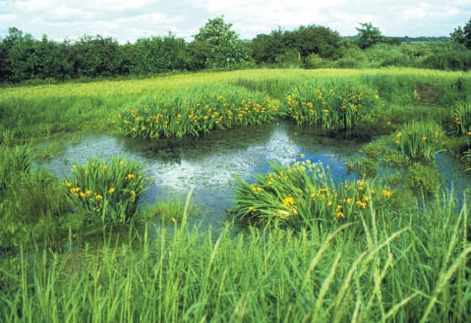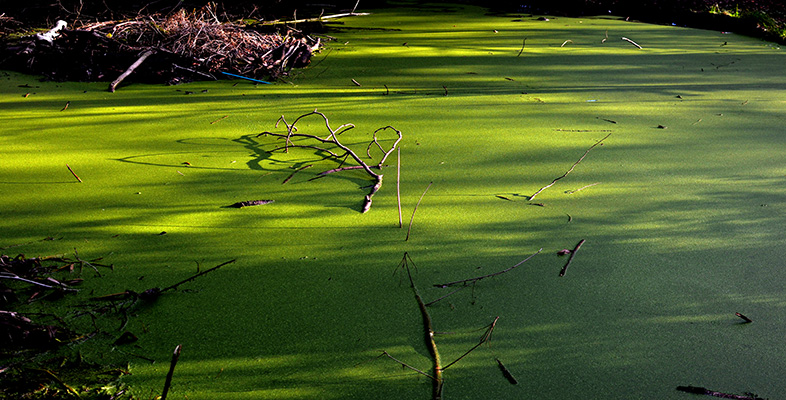1.3 Natural eutrophication
Eutrophication of habitat can occur without human interference. Nutrient enrichment may affect habitats of any initial trophic state, causing distinctive changes to plant and animal communities. The process of primary succession is normally associated with a gradual eutrophication of a site as nutrients are acquired and stored by vegetation both as living tissue and organic matter in the soil.
There is a long-standing theory that most water bodies go through a gradual process of nutrient enrichment as they age: a process referred to as natural eutrophication. All lakes, ponds and reservoirs have a limited lifespan, varying from a few years for shallow water bodies to millions of years for deep crater lakes created by movements of the Earth’s crust. They fill in gradually with sediment and eventually became shallow enough for plants rooted in the bed sediment to dominate, at which point they develop into a closed swamp or fen and are eventually colonized by terrestrial vegetation (Figures 1.6 and 1.7).


Nutrient enrichment occurs through addition of sediment, rainfall and the decay of resident animals and plants and their excreta. Starting from an oligotrophic state with low productivity, a typical temperate lake increases in productivity fairly quickly as nutrients accumulate, before reaching a steady state of eutrophy which might last for a very long time (perhaps thousands of years). However, it is possible for the nutrient status of a water body to fluctuate over time and for trophic state to alter accordingly. Study of sediments in an ancient lake in Japan, Lake Biwa (believed to be around four million years old) suggests that it has passed through two oligotrophic phases in the last half million years, interspersed with two mesotrophic phases and one eutrophic phase. Evidence such as this has led to the suggestion that the nutrient status of lakes reflects contemporary nutrient supply, and can increase or decrease in response to this. The processes by which nutrients are washed downstream or locked away in sediments help to ensure that reversal of natural eutrophication can occur.
Rivers vary in trophic state between source and sea, and generally become increasingly eutrophic as they approach sea-level.
